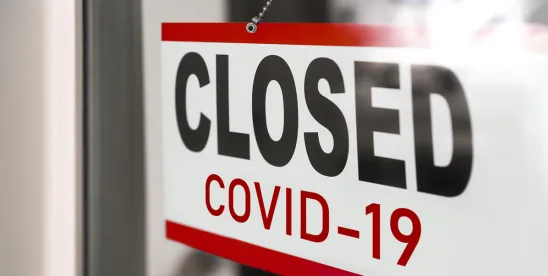On August 13, 2020, the United States District Court for the Western District of Texas granted State Farm Lloyds’ (“State Farm”) motion to dismiss a claim for loss of income resulting from multiple executive orders requiring closure of non-essential businesses in Bexar County, Texas following the COVID-19 pandemic.[1] In doing so, the court admitted that courts across many jurisdictions have found “physical loss” in the absence of tangible destruction to a covered property. However, the court glossed over such analogous cases involving disease-causing agents such as E. coli, ammonia, and asbestos, where those courts found the existence of physical loss.
The insured operated a series of barbershops in the Bexar County area, which were forced to close at the order of County Judge Wolff. The order required all businesses operating within Bexar County to cease operations except those defined as essential in an attempt to slow the spread of COVID-19 in the county. Several similar orders were ordered at the state and county levels (the “Orders”). The insured’s businesses were not deemed essential.
Following closure of its businesses, the insured sought coverage under an all-risk commercial property policy for loss of income. State Farm denied the insured’s claim stating that the loss did not constitute “direct physical loss to Covered Property” and that the claim was barred by the policy’s “Fungi, Virus, or Bacteria” exclusion (the “Virus Exclusion”), alleging that COVID-19 was the cause of the closures, which is a virus.
The court relied on case law based on inapposite factual scenarios to the current COVID-19 pandemic, such as hurricanes and the 9/11 terrorist attacks in finding that physical loss did not take place. Moreover, the court relied on decisions that looked to treatises such as Couch on Insurance to determine the meaning of “direct physical loss,”[2] in direct contravention of Texas law on the interpretation of insurance policies.[3]
The court further concluded that the Virus Exclusion precluded coverage. The insured argued that the Orders were the cause of the loss at issue, not the virus, as COVID-19 was not alleged to exist at any of the insured locations. The court acknowledged that the Virus Exclusion “could have been even more specifically worded.” However, relying on the policy’s anti-concurrent causation language, which broadened the scope of the virus exclusion to any loss where virus was a contributing cause to the loss, the court found that the exclusion would apply since the closure order was predicated on the presence of COVID-19.
While this decision appears to be a win for insurers in the context of COVID-19 related business closures across the county, the decision fails to apply a proper analysis of Texas law on the issue of “direct physical loss or damage” and likewise fails to consider the inconsistent and, perhaps, contradictory representations made to state regulators by insurers about the purpose and scope of virus exclusions like the one found in State Farm’s policy. Despite these shortcomings, we expect the decision will be featured prominently by insurers in future COVID-19 related cases.
[1] Diesel Barbershop, LLC et al. v. State Farm Lloyds, Civ. Case No. 5:20-cv-00461-DAE (W.D. Tex. 2020).
[2] See Hartford Ins. Co. of Midwest v. Mississippi Valley Gas Co., 181 F. App’x 465, 470 (5th Cir. 2006) (“As a general matter, property insurance coverage is triggered by some threshold concept of physical loss or damage to the covered property.” (citing 10A COUCH ON INS. § 148:46 (3d ed. 2005)); see also Ross v. Hartford Lloyd Ins. Co., 2019 WL 2929761, at *6–7 (N.D. Tex. July 4, 2019) (“direct physical loss” requires “a distinct, demonstrable, physical alteration of the property” (citing 10A Couch on Ins. § 148:46 (3d ed. 2010)).
[3] “Terms that are not defined in a policy are given their generally accepted or commonly understood meaning.” Lamar Homes, Inc. v. Mid–Continent Cas. Co., 242 S.W.3d 1, 8 (Tex. 2007).
Meagan Cryrus contributed to this article




 />i
/>i

